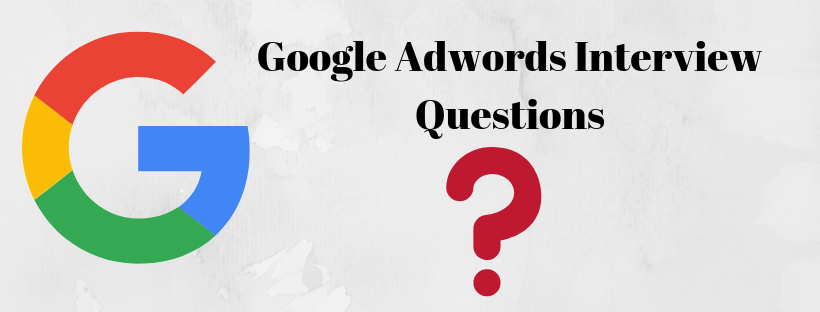Q1. Explain the importance of SEO for a business?
SEO is crucial for businesses as it improves website visibility in search engine results, leading to increased traffic. It enhances user experience, builds credibility, and is a cost-effective marketing strategy targeting users actively searching for products or services. SEO also provides long-term results compared to paid advertising.
Q2. What is a keyword? What is the role of a keyword in SEO?
Keywords, also known as SEO keywords or focus keywords, are words and phrases that summarize the content on a web page. They represent the search terms for which a page aims to rank. Keywords play a crucial role in helping users find a website through search engines.
For Google and SEO professionals, keywords are essential as they provide insights into user intent, helping businesses understand their audience and tailor their content accordingly. Keywords serve as a target for businesses to focus their content and meet the needs of their audience.
Q3. Name different types of keywords.
To optimize a web page, there are two main types of keywords:
-
Primary Keywords: These are the main keywords that should be prominently featured on a webpage. For effective optimization, these keywords should be included in the first paragraph, headings, and subheadings. It’s important not to overuse them.
-
Related Keywords: Also known as Latent Semantic Keywords, these are variations of the primary keyword that should naturally appear in the on-page content.
Additionally, it’s recommended to incorporate other types of keywords commonly used in SEO:
- Short-tail Keywords
- Long-tail Keywords
- Geo-targeting Keywords
These different types of keywords help to diversify and enhance the optimization of the content, catering to a wider range of search queries and user intents.
Q4. What is the importance of LSI Keywords?
LSI (Latent Semantic Indexing) Keywords are terms that are semantically related to the main keyword or topic being searched for. They are important because they help improve the relevance of a page by providing contextually relevant words and phrases. Using LSI keywords allows you to optimize your content without overusing the main keyword, thus avoiding keyword stuffing.
Google’s algorithm uses LSI keywords to understand the meaning of the content and determine its relevance to the search query. By incorporating LSI keywords naturally into your content, you can improve your chances of ranking higher in search engine results pages (SERPs) and providing users with more relevant and useful information.
Q5. What is your approach to keyword research?
Your answer to this question may vary from person to person but a model answer to this question is:
When conducting keyword research, I primarily use tools like Google Keyword Planner. However, my approach goes beyond simply entering keywords into the tool. I begin by creating detailed buyer personas to understand the needs and challenges of my target audience. Based on these personas, I brainstorm a list of potential keywords that align with their interests and search intent.
Next, I use Google Keyword Planner to analyze the search volume and competitiveness of these keywords. I focus on long-tail keywords that are specific to my niche and have a moderate to high search volume. This helps me find the “sweet spot” where the keyword is targeted and has good search volume, but is not overly competitive.
Additionally, I analyze the top-ranking pages for my target keywords to understand the type of content that performs well. This helps me tailor my content strategy to better match user intent and improve my chances of ranking higher in search engine results. Overall, my keyword research approach is comprehensive and data-driven, ensuring that I target the most relevant keywords for my audience.
Q6. How can one do SEO for a video?
Videos are becoming more popular online, and they can boost SEO if they attract attention and generate shares and backlinks. However, getting videos noticed requires SEO to ensure they are discoverable. Since Google cannot watch videos, it relies on text-based information to rank them. Including a transcript allows search engines to crawl the text and understand the video’s content. It’s also important to optimize keywords, page titles, and descriptions to improve the video’s visibility in search results.
Q7. What are the various categories of SEO techniques?
There are three different types of SEO –
-
On-page SEO: This involves optimizing individual pages on a website to improve rankings and attract organic traffic. It includes practices like optimizing content, meta tags, and images.
-
Off-page SEO: This refers to techniques used to improve a website’s position on search engine results pages (SERPs) through external methods such as link building and social media marketing.
-
Technical SEO: This focuses on optimizing the technical aspects of a website to improve its crawlability and indexing by search engines. It includes tasks like improving site speed, fixing broken links, and implementing structured data markup.
Q8. Can you tell us the difference between on-page and off-page SEO.
On-page SEO involves optimizing various elements on your website that impact your search engine rankings and overall off-page optimization efforts. It requires regular updates to maintain or improve your ranking. Key components of on-page optimization include the page title, high-quality content, URL structure, meta description tag, optimized images with alt tags, page performance, and internal linking.
Off-page SEO, on the other hand, focuses on enhancing your domain’s authority through links from other websites. It relies on external factors to boost your site’s rankings. Important off-page ranking factors include backlinks, social bookmarking, guest blogging, and social media engagement.
While on-page SEO offers full control, off-page SEO relies on the actions of others, such as obtaining backlinks and reviews. To achieve high rankings, a website must be optimized for both on-page and off-page SEO.
Q9. Name different off-page SEO techniques.
Different off-page SEO techniques include blog posting, article posting, forum posting, Yahoo Answers, blog comments, directory submission, social bookmarking, press release submission, deep-link directory submission, and regional directory submission.
Q10. Explain what is page speed and its importance in SEO?
Page speed refers to how quickly a website’s content loads for a user, which is crucial for providing an optimal on-page user experience. Faster-loading pages are more efficient and tend to rank better in search engine results. Google considers page speed as a important ranking factor.
Several factors that can affect or are related to page speed are –
- Page size
- Images, videos, and heavy files
- Excess code and JavaScript
- Load time
- Time to First Byte (TTFB)
- Round Trip Time (RTT)
- Last Contentful Paint
Q11. What is a backlink?
Backlinks are incoming links to a website or web page from another site. When one website links to another, it signifies the content’s importance. Search engines like Google consider backlinks as a ranking signal. High-quality backlinks can improve a web page’s rankings and visibility on search engines.
Q12. What is Google Sandbox?
The Google Sandbox Effect suggests that new websites are often placed on probation, unable to rank effectively for their main keywords. This phenomenon is believed to occur when websites acquire too many backlinks too quickly. While Google has not officially confirmed the existence of the sandbox, it has been a topic of discussion among SEO professionals.
Q13. What is a XML Sitemap? State its importance in SEO.
An XML sitemap is a file that lists all the URLs of a website, helping search engines like Google to crawl and index the site’s content more efficiently. It provides valuable information about each URL, such as when it was last updated and how important it is in relation to other URLs on the site.
In SEO, XML sitemaps are important because they help search engines discover and index new content faster, especially for large websites with complex structures. They also provide insights into the website’s structure and organization, helping search engines understand the site’s hierarchy and prioritize crawling accordingly. Overall, XML sitemaps contribute to better visibility and accessibility of a website’s content in search engine results.
Q14. Name some of the important Google ranking factors?
Some of the important Google ranking Factors are:
- Quality Content
- Technical SEO
- Quality & Relevant Backlinks
- Mobile First
- Page Speed
- Brand Strength
- Domain Strength
- User experience
- Schema Code
- Social Signals
- Domain Authority
- Content-Type
- Content Depth
Q15. What is the difference between a do-follow and a no-follow link?
Do-follow links are links that search engines can follow to reach a website, acting as backlinks that enhance a site’s ranking. By default, all hyperlinks are do-follow.
No-follow links, however, tell search engines to ignore a link, passing no value from one site to another. These links typically do not influence rankings or visibility in search engine indexes. A no-follow link contains a rel=”nofollow” attribute in its HTML code.
Q16. What is an outbound link?
An outbound link is a link on a website that directs users to another web page or website. Outbound links help to extend the relevancy signal of the webpage and can boost SEO rankings, especially if they come from authoritative sites. Outbound links are also referred to as external links.
Q17. What do we understand by Page Rank?
PageRank is one of the algorithms used by Google, where it gives a page rank to determine a web page’s relevance or importance. This SEO interview question is pretty basic but the recruiter will want to know if you know when was Page Rank present on Google SERP and when it was removed. Do mention to the recruiter that it is still present as a ranking factor, but Google has hidden it.
Q18. What is keyword density?
Keyword density refers to the number of times a keyword appears on a given webpage. It is the percentage density of a particular phrase or keyword available on a website compared to the total number of words on a particular page.
Q19. What is keyword proximity?
Keyword proximity is the term used to describe the closeness or proximity of keywords to each other within a body of text on a web page.
Q20. What is keyword difficulty?
Keyword difficulty or competition refers to how challenging it is to rank for a specific keyword in Google’s organic search results. This difficulty is influenced by various factors, including the quality of content, domain authority, and page authority.
Q21. What is a long-tail keyword?
Long-tail keywords are phrases consisting of more than three words that make search results highly specific. While they have lower search volume compared to shorter keywords, they often have a higher conversion value because they are more specific to a user’s intent.
Q22. What is a landing page?
A web page that serves as the entry point for a website or a specific section of a website is known as a landing page.
Q23. What are Meta Tags?
HTML Meta Tags are concise summaries that describe a page’s content. They are page data tags that lie between the open and closing head tags in the HTML code of a document. Meta tags do not appear on the web page but tell search engines what a web page is about. This information, called metadata, is read by search engines and web crawlers.
Q24. Why is Title Tag important for a website?
Title tags are critical for SEO as they display preview snippets for a page, providing a preview of the page’s content. They are essential for both SEO and social media sharing, as they give a clear idea of what the page is about. A well-crafted title tag provides a concise and accurate summary of a page’s content.
Q25. What are some of the important Meta tags in SEO? Mention their character limits.
The key Meta tags in SEO include:
- Title tag: Google displays approximately 55-64 characters (keeping it under 60 characters is ideal).
- Meta Description tag: Allows up to 160 characters to summarize the page content.
- Robots Meta tag: Determines how search engine crawlers interact with the page, with four main values—follow, index, nofollow, and noindex.
Q26. What is SERP?
A search engine result page (SERP) is the list of results displayed when a user searches for something online using a search engine like Google. While SERPs can vary for each query, Google’s search results typically include:
-
Sponsored Results and Ads
-
Organic Search Results
-
Related Searches
-
Images
-
Featured Snippets
-
Knowledge Panel
-
Video Carousel
Q27. Explain Anchor text. What is the use of anchor text in SEO?
Anchor text is the clickable text in a hyperlink that users see on a webpage. It is typically underlined and colored differently to indicate that it is a link.
In SEO, anchor text is important because it provides context to search engines about the content of the linked page. Search engines use anchor text as a ranking factor to determine the relevance of a page to a particular keyword or topic. Using relevant and descriptive anchor text can help improve the visibility and ranking of a webpage in search engine results pages (SERPs).
Q28. What is organic results in SEO?
Organic results are listings on a search engine results page (SERP) that appear because of their relevance to the search terms, as opposed to being paid advertisements. Organic results are determined by the search engine’s algorithm and cannot be influenced by paid advertising.
Q29. What are some of the major factors that affect Google ranking of a web page?
Some of the known Google ranking factors include:
- Quality and structure of content
- Quality and relevant backlinks
- Page speed
- Image alt-text
- Mobile friendliness
- User experience
- Content freshness
- Domain age, URL, and authority
Q30. What is Image Alt Text?
An image alt tag, also known as an alt attribute or alt description, describes an image on a web page. It is an HTML attribute applied to image tags and is visible on the page itself. Since search engines cannot interpret images, the alt text provides a text alternative that can be read by search engines. Images with properly optimized alt text can positively impact a page’s ranking in search engine results.
Q31. Name some tools which can be used to check the number of backlinks of a competitor’s website?
Some popular backlink checker tools include:
- LinkMiner
- Ahrefs
- SEMrush
- BuzzSumo
- Moz Link Explorer
Q32. Explain 301 redirect.
A 301 redirect is a method of redirecting a user from one URL to another. It is used in several specific cases, including:
- Changing a URL
- Recreating a piece of content
- Migrating content from one domain to another
- Consolidating several pieces of content
Q33. What are the common SEO mistakes?
Some of the most common SEO mistakes include:
- Not optimizing for the right keywords
- Not having unique title tags and meta descriptions
- Using the same anchor text for every link
- Focusing on link quantity over link quality
- Using poorly-written content
Q34. What is Googlebot?
Googlebot is the web crawler software used by Google to index webpages for its search engine. It comes in two primary forms:
-
Desktop crawler: This version of Googlebot simulates a desktop browser and is used to crawl and index webpages as seen on a desktop or laptop computer.
- Mobile crawler: The mobile version of Googlebot simulates a mobile browser and is used to crawl and index webpages as seen on a mobile device.
These crawlers help Google understand the content and structure of websites, which in turn influences how the search engine ranks and displays those sites in search results.
Q35. According to you what are the steps we can take to reduce the loading time of a web page?
To decrease the loading time of a website, several methods can be applied, including:
- Optimize images without losing quality
- Enable browser caching
- Optimize CSS delivery to reduce HTTP requests
- Avoid self-hosted videos
Q36. What is robots.txt?
robots.txt is a text file that instructs web robots, such as search engine crawlers, on how to crawl and index pages on a website. It is located at the root of a website’s domain (e.g., www.example.com/robots.txt) and contains directives that specify which areas of the site should not be crawled or indexed. Robots.txt files are used to manage crawler traffic to the website and can help prevent search engines from indexing sensitive or irrelevant pages.
Q37. Which is better — robots.txt or Meta Robot tags?
A meta tag is used to disallow single files and pages. Robots.txt is used to disallow a whole section of a site, such as a category. You can use both a meta robots tag and a robots.txt file as neither has authority over the other. However, meta Robot tags are better as they help in forcing the search engine crawlers not to index and display hidden pages. It also ensures that the link equity is not being lost, with the use of the ‘follow’ command.
Q38. Explain Cross-linking? Why should you do Cross-linking?
Cross-linking, also known as reciprocal linking, is the process of linking one site to another site. These sites may or may not belong to the same business or person. The purpose of cross-linking is to provide users with reference sites that contain search-related content.
Q39. Which of the following wouldbe the best choice of URL structure (for both search engines and users)?
- blog.rankfrog.com/144
- blog.rankfrog/category/seoquiz
- blog.rankfrog/quiz/seoquiz
- blog.rankfrog/quiz-seoquiz
- blog.rankfrog.com/category/article/563
- blog.rankfrog.com/06O7?id=567121
Answer: blog.rankfrog.com/category/article/563
Q40. What is an SEO-friendly URL?
SEO-friendly URLs are short, keyword-rich URLs that are optimized for search engine optimization (SEO). They typically contain relevant keywords that describe the content of the page. Additionally, SEO-friendly URLs are descriptive yet simple, making them easy for both users and search engines to understand.
Q41. Explain domain name.
A domain name, also known as a hostname, is the address of a website that you type into the URL bar of a web browser. It serves as a human-readable name for the specific location where a resource is located on the internet. Each computer connected to the internet is assigned an IP address, which is a series of numbers that identifies them. With a domain name, you do not need to remember the long string of numbers that make up an IP address, making it easier to navigate the internet.
Q42. What is a TLD?
TLD, or top-level domain, is the last part of an Internet address or the part of a domain that comes after the dot, like .com, .org, or .net. For example, in the domain naukri.com, the TLD is .com.
Q43. What is ccTLD?
ccTLD, or country code top-level domain, is a domain extension assigned to a country. These domains are two-letter country codes such as .us (United States), .uk (United Kingdom), or .de (Germany). ccTLDs are maintained by the Internet Assigned Numbers Authority (IANA) and are used to indicate the country or geographical area associated with a website.
Q44. What are some of the ways to maximize the frequency with which your site/page is crawled by the search engines?
There are several ways to maximize the frequency with which your site or page is crawled by search engines:
- Create high-quality, relevant content
- Optimize your site structure
- Use internal linking
- Submit a sitemap
Q45. What are the latest updates in the Google search algorithm?
Google frequently updates its search algorithm, so it’s crucial to stay informed and prepared to discuss the latest changes.
Q46. Name some of the best SEO-friendly plugins for WordPress.
While improving a WordPress site, it’s crucial to address the issue of plugin overload, as too many plugins can significantly slow down a website, directly impacting its ranking on Google. This consideration is paramount for enterprises of any size, whether small or large.
In addition to optimizing plugin usage, incorporating SEO-friendly plugins can enhance a WordPress site’s performance. Some of the top-rated SEO plugins for WordPress include:
- Yoast SEO
- Broken Link Checker
- Rank Math
- SEO Squirrly
- All in One Schema Rich Snippets
These plugins can help streamline SEO efforts and improve the overall performance of a WordPress site when used judiciously alongside proper optimization practices.
Q47. What are some of the black hat SEO practices to avoid?
Some of the black hat practices to avoid are, cloaking, keyword stuffing, content copying, link trading, buying links, hidden text, and link farming, These practices are not only frowned upon but also penalized by Google. It’s important to focus on ethical and sustainable SEO strategies for long-term success.
Q48. Explain the relationship between SEO and SEM?
Search Engine Optimization (SEO) and Search Engine Marketing (SEM) are two essential strategies for improving a website’s visibility in search engine results. The key distinction between the two lies in their cost: SEO is organic and free, while SEM involves paid advertising such as pay-per-click (PPC) and display ads. Despite this fundamental difference, both SEO and SEM are complementary and can be used together to maximize a website’s online presence and reach a broader audience.
Q49. What are the qualities of a effective SEO executive, in your opinion?
This question calls for a subjective response, but it’s important to consider the various skill sets necessary for success in this role. An SEO professional should possess excellent research and analytical skills. They should also have the ability to identify trends and adapt to changes in the industry.
Q50. What is Panda update?
The Panda Update is a search filter introduced by Google in 2011 to lower the rank of low-quality or thin sites from finding their way into Google’s top search results and to reward high-quality content by assigning a quality classification to the pages.
Q51. What is the Penguin update?
The Penguin update, initially launched in 2012, aimed to identify and penalize websites that engaged in spamming tactics to manipulate their search rankings. Specifically, it targeted websites that bought links or acquired them through link networks, which were primarily created to artificially boost their rankings on Google.
Q52. Explain doorway pages.
Doorway pages are web pages created for the purpose of spamdexing, which involves spamming the index of a search engine. These pages are designed to insert results for specific phrases, with the goal of redirecting visitors to a different page.
Q53. What is the limit of a robot.txt file?
Googlebot reads only the first 500 KiB (kibibytes) present in the robots.txt file.
Q54. Steps you would take to remove toxic links from a site?
Steps to remove toxic link from a site are as follows:
- Identify toxic backlinks using backlink checker tool
- Manually check the identified backlinks
- Use Google’s Disavow tool to mark the toxic links to be disavowed by Google
- Monitor changes
Q55. What is the DA?
Domain Authority (DA) is a metric created by Moz that predicts a website’s ability to rank on search engine result pages (SERPs).
Q56. What is Google Pigeon Update?
The Pigeon update, released in 2014, is Google’s local search algorithm update. It aims to improve the ranking of local listings in searches, providing more relevant, accurate, and useful local search results.
Q57. Explain rich snippets.
Rich snippets are enhanced search results displayed by Google and other search engines. These snippets include additional information extracted from the page, such as ratings, reviews, and other structured data. While rich snippets can improve click-through rates, they are actually a part of SEO, as implementing structured data markup can help search engines better understand the content of a page, leading to potentially higher rankings and more visibility in search results.
Q58. Explain Google’s Rich Answer Box.
Google’s Rich Answer Box, is a special type of search result that appears at the top of the organic search results. It provides a concise answer to a user’s query, extracted from a webpage, along with a link to the source. Users can see the answer directly on the search results page without having to click on any links. Google displays this feature when it believes it can provide a helpful answer to a specific question or query.
Q59. Explain Google’s Rich Answer Box.
Google’s Rich Answer Box, is a special type of search result that appears at the top of the organic search results. It provides a concise answer to a user’s query, extracted from a webpage, along with a link to the source. GUsers can see the answer directly on the search results page without having to click on any links. Google displays this feature when it believes it can provide a helpful answer to a specific question or query.
Q60. Explain what is Bounce Rate?
Bounce rate is the percentage of visitors who exit a webpage without engaging further, such as clicking on links or completing forms. While it’s a crucial SEO metric, indicating user engagement and content relevance, a low bounce rate isn’t always ideal.
Q61. What are the criteria for the uniqueness of a page?
Several factors determine the uniqueness of a page, including the similarity of its code and text, as well as its page name, title, headings, and meta tags.
Q62. Explain keyword stemming.
Keyword stemming involves generating new keywords from a base or root keyword by adding prefixes, suffixes, or pluralization variations.
Q63. How does keyword stemming work?
Keyword stemming can be beneficial for enhancing a page’s searchability, but it’s crucial to consider the context of the keyword. Failing to do so could have a negative impact on rankings.
Q64. Can you explain what is body content relevance?
Body content relevance or non-image text is textual content on a web page that does not include images. This text is essential for achieving higher rankings in search engines and ensuring effective page optimization.
Q65. What does it mean if nothing appears while searching a domain?
If your domain does not appear in search results, it could be due to several reasons, including:
- Your website has been banned by search engines.
- The page has not been indexed yet.
- There may be canonical issues affecting the visibility of your site.
Q66. What is Google Suggest?
As the name suggests, ‘Google Suggest’ (or Autocomplete) is a feature of Google that provides suggestions to users as they type their queries in the search bar. These suggestions are based on popular and relevant search terms frequently used by others.
Q67. What are Spiders, Robots, and Crawlers?
Spiders, robots, and crawlers are software programs used by search engines to explore the internet and index web content automatically.
Q68. Which of the following pieces of information is NOT available from current keyword research sources?
- Estimated volume of searches per month
- Cost per click paid by PPC advertisers
- Demographic data on searchers who use a particular term/phrase
- Popular terms/phrases related to a given keyword
Answer: Cost per click paid by PPC advertisers
Q69. For search engine rankings and traffic in Google & Yahoo!, it is generally better to have many, small, single topic-focused sites with links spread out between them than one, a large, inclusive site with all the links pointing to that single domain.
- TRUE
- FALSE
Answer: False
Q70. If a web page serves as a “sitemap,” linking to other pages on a particular domain in an organized, list format is important because?
Internal linking is important because it helps search engine crawlers access multiple pages on a site easily.
Q71. Which search engine patented the concept of “PageRank” as a methodology to rank websites and webpages?
Google developed & patented the concept of “PageRank” to rank websites and webpages.
Q72. What can be an acceptable way to show HTML text to search engines while creating a graphical image for display to users?
An acceptable way to show HTML text to search engines while creating a graphical image for display to users is to use CSS image replacement. This technique involves using a CSS rule to replace text with an image based on a specific class, ensuring that the text is accessible to search engines while the image is displayed to users.
Q73. What is Search Engine Submission?
Search Engine Submission is the process of adding a website to a search engine’s index. It involves making the search engine aware of a site or page’s existence. This can be done in two ways:
- Submitting individual pages using webmaster tools such as Google Search Console.
- Submitting the entire site by submitting the home page to multiple search engines, known as mass submission.
These methods help ensure that search engines are aware of the website and its content, which can improve its visibility in search engine results pages (SERPs).
Q74. What are Social Signals?
Social Signals are the interactions people have with web pages on social media platforms. These interactions can include likes, dislikes, shares, upvotes, pins, views, and other forms of engagement.
Q75. What is a NAP?
NAP stands for Name, Address, Phone Number. It’s an essential element for businesses aiming to rank high in local organic search results. Search engines like Google use this information to decide which companies to display for location-specific searches.
Q76. What is a Google Penalty?
A Google Penalty is a form of punishment imposed on websites that violate Google’s guidelines or engage in practices deemed manipulative or unethical. It can result from algorithm updates or manual reviews by Google. The penalty leads to a decrease in the website’s search rankings, affecting its visibility and traffic.
Q77. How do you identify a bad backlink?
Bad links are typically characterized by several factors, including originating from low-authority or suspicious domains, pointing to irrelevant content, using overly keyword-optimized anchor text, participating in link exchanges, being repetitive, originating from unindexed sites, or being considered spam or paid links.




